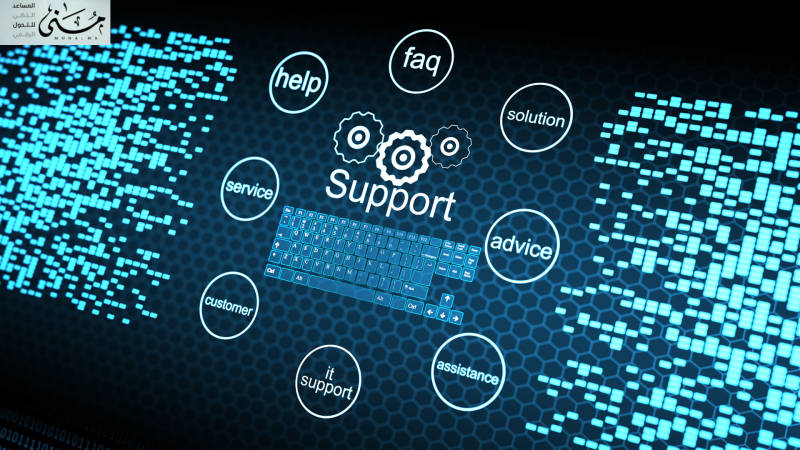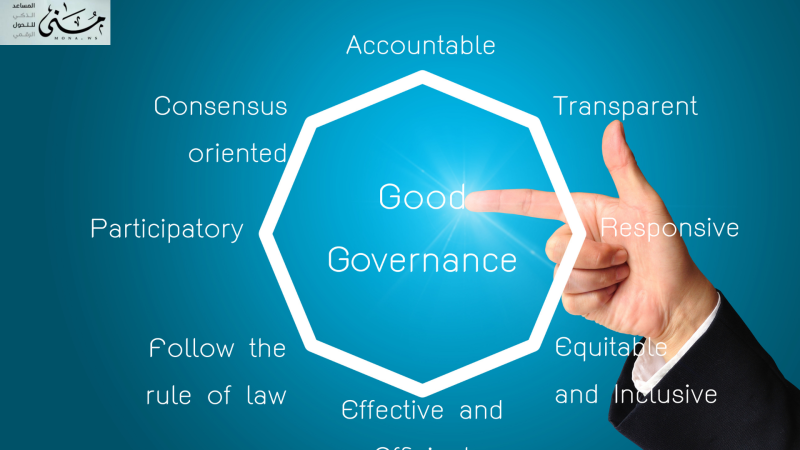Companies and governments rely on different governance models to organize their operations and balance the interests of shareholders, customers, and employees. As technology evolves, organizations are increasingly relying on digital systems to enhance compliance and smart governance, contributing to improved performance and reduced risk.
Continue reading this article to learn more about the most prominent governance models.
What are governance models?
Governance is the framework through which companies and organizations are guided to ensure the achievement of strategic objectives, enhance transparency, reduce risks, and balance the interests of different stakeholders.
Governance models vary according to the nature of the organization, and the legal, cultural, and economic environment in which it operates. These models are essential tools for ensuring compliance and effective governance, which enhances the sustainability and competitiveness of any organization.

Global Governance Statistics
According to World Bank reports, 75% of companies that implement strong governance achieve growth rates 20% higher than companies that do not adopt clear systems of good governance.
A study by the Organization for Economic Co-operation and Development (OECD) showed thatOECD) that 60% of the financial crises facing large companies are due to weak governance practices and non-compliance with international standards.
In the Middle East, a study byPwC says 45% of family businesses face business continuity difficulties due to the lack of a clear governance model, which threatens their future.
Evolution of governance models over time
Over the past decades, governance models have evolved from mere internal regulations to integrated frameworks based on international standards. Initially, most organizations relied on simple models that relied on the role of boards of directors only, but with economic and technological developments, the need for more detailed models that ensure accountability and effective oversight has emerged. Among the most famous modern governance models are:
Anglo-American model of governanceIt is based on the separation of ownership and management, where the board of directors has a pivotal role in overseeing the performance of executives.
German governance modelIt features a supervisory and management board, providing an additional layer of oversight and accountability.
Japanese governance model: Focuses on the stakeholder principle, where employees, suppliers and customers are involved in the decision-making process.
Governance Model in Emerging Markets:It combines elements of Western governance models but is influenced by the legal and cultural structure of each country.
In some countries, governments play a greater role in guiding large corporations to maintain economic stability.
With digital transformation, intelligent systems like DocSuite have become an effective tool for document management, administrative communications, and governance automation, contributing to transparency, faster decision-making, and reduced operational risks.
Challenges of implementing governance in institutions
Despite the major developments in the application of governance models, institutions face many challenges, the most prominent of which are:
Regulatory and legislative complexitiesGovernance laws vary from country to country, making it difficult to apply a uniform model globally.
Operating costImplementing governance models requires sophisticated technical and administrative systems, which may constitute a financial burden on small and medium-sized enterprises.
internal resistanceSome employees and managers see governance as more restrictions and bureaucracy, which leads to resistance to its implementation.
Weak corporate cultureIn some environments, organizations lack sufficient awareness of the importance of governance, which hinders its effective implementation.
Reliable Governance Systems
In light of the digital transformation, advanced electronic systems have emerged that contribute to improving governance management, such as:
Doc Suite SystemDocSuite): It enables document management, record keeping, and organization of administrative communications, which contributes to enhancing compliance and transparency within organizations.
SystemSAP GRC: Helps organizations manage risks and comply with laws and regulations.
SystemOracle Governance, Risk, and Compliance": Provides integrated solutions for compliance monitoring, risk analysis and promoting effective governance.
Governance models have become an indispensable necessity to ensure the continuity of institutions and achieve transparency and accountability. With the digital development, smart systems have become an effective tool to support the implementation of governance in a more accurate and flexible manner. However, the biggest challenge remains building an institutional culture that supports commitment to these models to ensure their success.
Why are governance models important?
Governance models are defined as the frameworks that define how institutions are managed and decisions are made within them in a way that ensures transparency, accountability, efficiency, and the interests of all stakeholders. Governance models vary according to the nature of the institution, whether it is a commercial company, a government institution, or a non-profit organization, and are also affected by the legal, cultural, and economic factors of each country.
The importance of governance models is:
Achieving transparency: By setting clear rules for accountability and financial and administrative disclosure.
Boost confidenceWhether between investors, employees, or customers, which increases the stability of the institution.
Improve performance: By ensuring that informed decisions are made based on long-term strategies.
Reduce riskBy establishing internal control mechanisms and adhering to legal standards.
Basic pillars of governance
For a governance model to be effective, it must be based on a set of basic pillars, which are:
TransparencyThe necessity of disclosing all financial and administrative information clearly, which helps stakeholders make decisions based on correct data.
Accountability: Clearly define responsibilities within the organization, so that each individual is responsible for his actions and decisions before management and stakeholders.
Justice: Ensuring equality among all stakeholders, whether shareholders, employees, customers, or suppliers.
IndependenceThe board of directors and the supervisory bodies must be fully independent to ensure that unbiased decisions are made.
Different governance structures
Governance models do not operate in isolation from the administrative and organizational structures within the organization. Governance structures can be classified into:
Board of Directors StructureHe is responsible for developing strategies and supervising their implementation by executive management.
Executive Management StructureIt includes the managers and those responsible for operating the institution according to the directives set by the Board of Directors.
Oversight and Audit Committees: Monitors the institution’s compliance with regulations and laws, and ensures compliance with international standards.
Risk management: Focuses on identifying and assessing operational and financial risks and taking proactive measures to avoid them.
International governance standards and modern governance
There are many standards and agreements that help establish a unified global framework for governance, including:
OECD Principles (OECD): Provides guidance on how to balance the rights of shareholders and management.
Basel Committee Standards: Focuses on governance in the banking sector, emphasizing financial risk management.
Standards issued by the Securities and Exchange Commission (SEC): Aims to ensure financial compliance and transparency in financial markets.
As technology evolves, organizations are increasingly relying on digital solutions to ensure efficient governance, such as:
Artificial Intelligence and Data Analysis: Helps monitor compliance and provide accurate reporting on the organization's performance.
Electronic Document Management Systems: (likeDocSuite - Oracle Governance, Risk, and Compliance provides advanced solutions for document archiving, administrative communications management, and governance process automation.
Blockchain Technologies: Enhances transparency by creating immutable records of transactions and management decisions.
Governance models are the foundation of any organization’s success, ensuring sustainability, transparency, and effective achievement of strategic objectives. As technology evolves, organizations increasingly rely on digital systems to enhance compliance and reduce risk, making governance a critical component of the modern business environment.
 نماذج الحوكمة ضرورة لا غنى عنها لضمان الاستمرارية وتحقيق الشفافية
نماذج الحوكمة ضرورة لا غنى عنها لضمان الاستمرارية وتحقيق الشفافية










Comments
Add New Comment